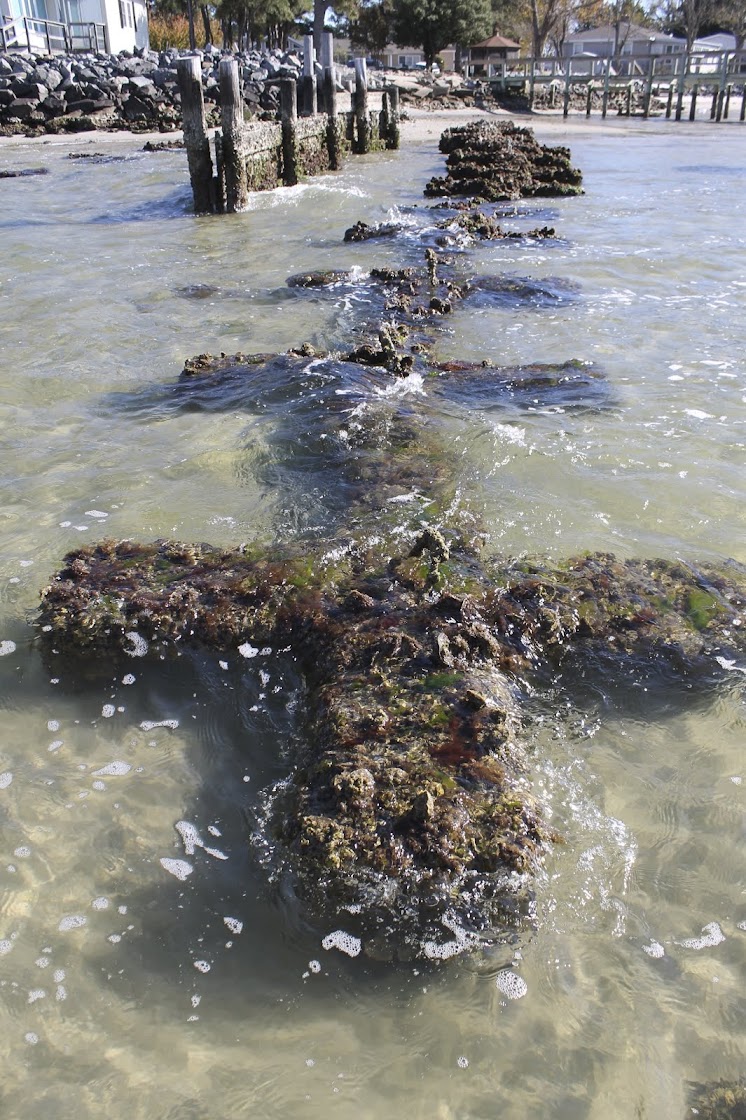After several visits to the reef in October, my summary of the biogenic reef right now is "If you build it, they will come"! Wow, the amount of life and the diversity on the reef structures is really amazing! It is truly a "biogenic" reef, not just an oyster reef. On this past sampling we observed a great diversity of life on the reef which included an extraordinary strike of oyster spat, ribbed mussels, sponges, barnacles, various macroalgae (seaweed), mud and blue crabs, naked gobies, and so on. The reef structures have become home to the host of species that you would expect to find on a natural reef structure in the Chesapeake Bay- which is the idea! The interesting thing about the design of the reef and the site at Cherry Point is that the structure lifts the organisms off of the sediment high enough to reduce smothering and the natural sandiness of the substrate eliminates the muddy coating that you can often find in other parts of the rivers. The result is a very "clean" fouling surface where macroalgae grow really well and the filter feeders have less clogging due to lower turbidity. Cherry Point is one of those really ideal places for this type of structure to harbor the highest diversity the Bay has to offer. We have also been measuring the settling of the reef components and they appear to be quite stable and we find that the sand moves around them, but that they are maintaining their profiles nicely. We are working on our report for the residents of Cherry Point, to pull together our findings, and we hope to continue to monitor and study the reef as it ages through the coming year. This has been a fantastic learning experience for our students and a lot of fun to watch the reef grow and develop. Thanks CPPOA!
 |
| This is how the reef looked in May 2015 |
 |
| This is the same section in October 2015! |




